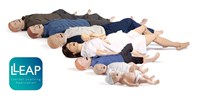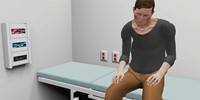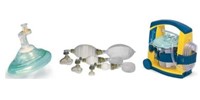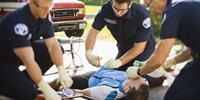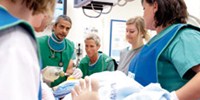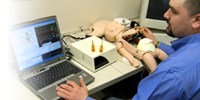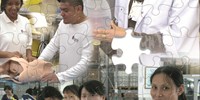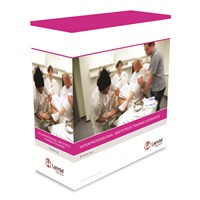Validated by Obstetric Physicians and Nursing Educators, the
Interprofessional Obstetrics Training scenarios address key learning objectives geared towards interprofessional obstetric emergency training and are designed to teach participants to assess different levels of birth giving situations and manage both basic and advanced obstetric care. The learning objectives and the case stories have been developed to focus on maternal and infant treatment before, during and after delivery.
The Interprofessional Obstetrics Training Scenarios package contains 18 different scenarios, divided into three birthing stages:
- Eight (8) stage A scenarios, representing the first stage of a delivery including maternal history. These may serve as the background information of either a stage B or stage C scenario.
- Seven (7) stage B scenarios, focusing on different situations that may occur during the second stage of a delivery. These scenarios require learners to apply appropriate techniques to deliver the infant safely.
- Three (3) stage C scenarios, focusing on the last stage of a delivery including delivery of the placenta and managing hemorrhage.
These scenarios can be used in a variety of combinations depending on the learner's level of competency. They can be used as single cases to allow instructors to work with learners in a manner that allows for more coaching and hands-on time for the learners. A scenario from each of the three stages can be used simultaneously to enact a complete delivery situation.
The Interprofessional Obstetrics Training scenarios are set to take place in a hospital, emergency department, ICU or pre-hospital setting, and are specifically designed for the PROMPT Birthing Simulator used as a hybrid simulator.
The Interprofessional Obstetrics Training scenarios address major learning objectives enabling learners to practice the skills required for successful deliveries.
Eighteen (18) scenarios allow training in both basic and advanced maternal care by helping improve the learners’ competence and confidence through the benefits of simulated team training:
• Assessment and management
• Critical thinking skills
• Team communication
• Debriefing and learner reflection and remediation
Stage A Scenarios: Before Delivery
1A Normal Maternal History and Labor
2A Maternal Obesity
3A Term Premature Rupture and Membranes
4A Rupture of Membranes with Meconium-stained Fluid
5A Premature Labor at 30 Weeks Gestation
6A Chorioamnionitis
7A Prolonged Staged 1
8A Partial Placenta Previa
Stage B Scenarios: During Delivery
1B Normal Vaginal Delivery
2B Occiput Posterior Delivery
3B Instrumental Delivery
4B Shoulder Dystocia
5B Umbilical Cord Prolapse
6B Face Presentation
7B Precipitous Breech Delivery
Stage C Scenarios: Post Delivery
1C Normal Placenta Delivery
2C Retained Placenta
3C Hemorrhage


